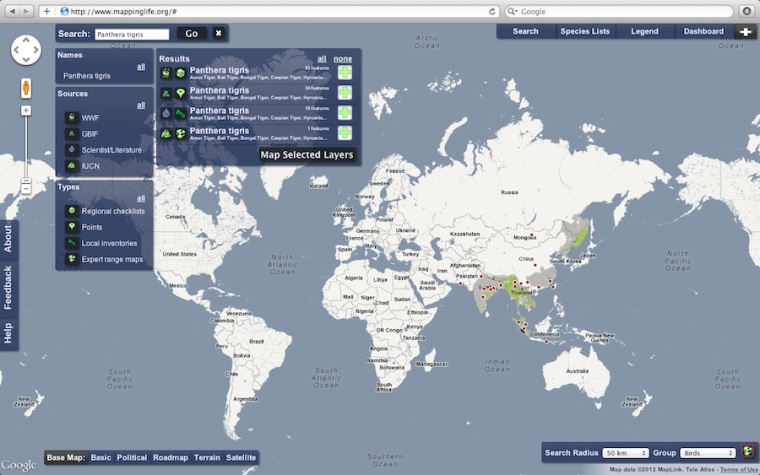What Map of Life wants to answer is simple, but difficult: Where in the world do plants and animals live?
The freely available online map, which launched Thursday, now has answers for 25,000 land animal and fish species. Such data could help biologists better understand biodiversity and outdoors enthusiasts identify the critters around them. "It is the where and the when of a species," Walter Jetz, a Yale University biologist who led the Map of Life project, said in a statement. "It puts at your fingertips the geographic diversity of life."
Scientists already have many databases showing the worldwide ranges of creatures ranging from spotted salamanders to tigers. What's new about Map of Life is that it combines several sources of data that, at first glance, don't seem like they would fit well together. Range maps found in field guides, individual points from someone observing a species in a particular place, citizen science data, data gathered by national park rangers and data gathered from larger regions all show up on the Map of Life. The map's creators gave the different kinds of data different shapes and colors, so users can distinguish between them even when they all show up on the map at once. Users can also add or remove one kind of data at a time.
Knowing the distribution of species around the world will help scientists and government agencies decide how to use different pieces of land and focus conservation efforts, said Robert Guralnick, a biologist at the University of Colorado at Boulder who worked on making the map. The map could provide data for studies about climate change and about diseases that are passed between animals and people.
Right now, the tool people see at Mappinglife.org is still in beta testing. In the future, Map of Life users will be able add their own data to the map, Guralnick told Nature News. Future versions of the map will also include plants and some species without backbones. No matter what the mapmakers do, they'll only ever cover a fraction of the world's 1.3 million described species, not to speak of the millions that are yet undiscovered.
Here's the most fun upcoming improvement: Map of Life's scientists want to make a smartphone app where users can see their odds of seeing a species, wherever they're standing in the world.
Follow InnovationNewsDaily on Twitter @News_Innovation, or on Facebook.
